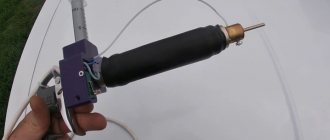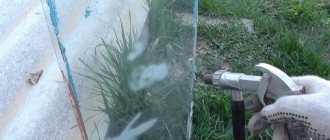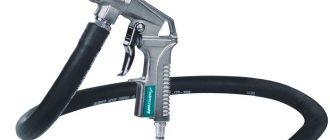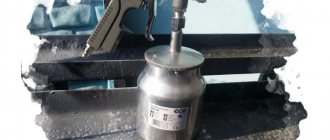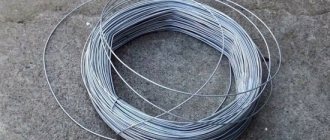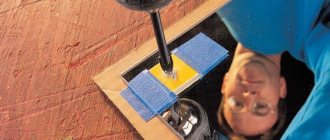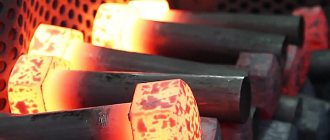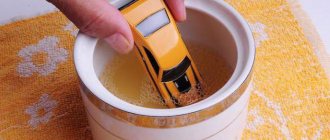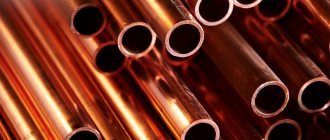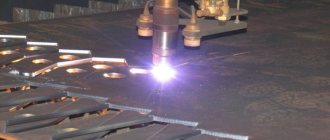In order to clean a contaminated surface, remove dust, soot or rust, paint or varnish residues from it, different cleaning methods are used. Cleaning is done using a damp or dry rag, sponge or sandpaper, wire brush or file. But processing with these products often leaves scratches on the surface being cleaned. To prevent this from happening, other, more gentle processing methods are used, one of which is sandblasting.
In addition, this natural material perfectly polishes the surface. This method is used to clean walls from plaster, paint, to make walls rough, and when carrying out other finishing work.
Sandblasting, as the name suggests, is the cleaning of an exposed surface using sand. At the same time, such a natural abrasive substance not only cleans the surface, but at the same time also polishes it . With this method, sand is supplied at high speed to the object being cleaned under the influence of compressed air.
Application of technology
Sand treatment is used for the following purposes.
- Treatment of metal products to remove rust or paint residues before applying anti-corrosion coatings and other protective agents to the surface of structural elements.
- Grinding the surface of wooden, stone, plastic, ceramic or metal blanks, parts or finished products for subsequent application of a decorative coating.
- Applying inscriptions and drawings on household items or furniture.
- Frosting of glass. It is used when processing mirrors to give them an opaque effect, for applying patterns to glass (artistic matting). This method is also used for decorating glass surfaces of dishes, processing window glass, shower panels. Used in production.
- Restoration of decorative art objects or other products.
- Degreasing metal parts before their subsequent coating with varnish or paint.
- Processing walls to give them the effect of surface roughness.
- Giving wooden products an aging effect. It is used when processing furniture, interior items, and decorative elements: caskets, figurines, boxes, drawers.
- Grinding of car parts and surface cleaning of the body from dirt and corrosion for subsequent processing.
Industry sectors
Sandblasting is used in various industrial sectors and areas:
- construction - to create a textured wall surface. Sandblasting equipment is used to clean brickwork and treat wooden surfaces;
- instrument making - for processing workpieces and cleaning them;
- reinforcement;
- automobile;
- metallurgical and other industries.
To carry out this treatment, various means are used, one of which is a sandblasting gun.
How to choose the right model?
Before buying sandblasting machines, you need to familiarize yourself with a number of factors that affect the performance of the equipment:
- Sandblasting devices must be equipped with thick-walled hoses to withstand prolonged exposure to abrasive and pressure.
- The abrasive feed rate depends on the size of the hole on the nozzle.
- It is not recommended to buy models with plastic parts, as they will quickly fail.
- You need to evaluate the pen before purchasing so that it is convenient to work in the future.
If you need a model for your home, garage, or workshop, you need to buy a unit with a container for abrasive.
Operating principle
Such equipment varies depending on its shape and design, power, functions performed and method of operation.
The principle of operation of sandblasting guns of any model is simple: the surface being treated is cleaned under the influence of a powerful, narrowly directed jet of sand, which is directed onto the surface to be cleaned under the influence of compressed air pressure of several atmospheres. As a result of such actions, the excess layer is removed from the surface .
Quartz sand processed in a special way is used as an abrasive material for guns.
Sandblasting guns are used for car repair work, used in the glass and construction industries, and used in almost all industries.
Sandblasting technique
Sandblasting equipment produces a mixture of air and sand under high pressure. The connection allows you to easily process various surfaces of metal, stone or glass materials. It is also possible to perform decorative design of parts.
Sandblasting works
Most models have jet adjustment, which makes it possible to process both large-volume materials and small surfaces. The composition of the produced mixture often contains quartz sand, small particles of glass, and iron shot. The particle size released should not exceed 0.5 mm to avoid equipment damage.
Construction of sandblasting guns
A standard pistol consists of parts:
- sand container;
- compressor;
- nozzle holder;
- nozzle;
- sand supply regulator;
- abrasion resistant sleeve.
The nozzle holder, nozzle and sleeve make up the body of the gun, with the help of which the abrasive substance is sprayed.
The design features of a particular pistol model may vary. Some models have a remote control , with which it is convenient to carry out work on cleaning the surface while being at some distance from it. Such devices are more expensive than manually controlled models.
The capacity of the sand tank ranges from 25 to 300 or more liters. The higher this number, the more abrasive substance will fit in the tank, the longer the device can be used. Devices with a larger tank volume have more power and are more expensive.
The sand contained in the container enters the gun through a hose. A jet of compressed air is generated using a sandblasting compressor. Thanks to it, the abrasive powder escapes from the barrel of the gun. The speed increases as the substance passes through the abrasion-resistant sleeve. Thus, the abrasive powder particles receive a speed sufficient to process the surface by repeatedly hitting the material on the coating.
Sand for sandblasting machine
The use of mechanical processing sometimes does not fully meet production requirements. In such cases, abrasive powder or sand is used. The most common materials are caper slag, quartz sand, and other types of raw materials. Different sizes allow you to choose sand to suit your needs.
The product is selected according to certain criteria:
- Hardness indicators characterize the durability of the abrasive. The hardness of raw materials is rated on a ten-point scale; a higher rating means more stable properties of the material during processing.
- Fraction means the degree of grain size. It is divided into complex, basic and minimal grain sizes. The choice of nozzle depends on the properties of the quartz sand fractions.
- Mechanical stability determines the nature of destruction upon contact with treated surfaces.
- Abrasiveness is an important meter that affects the parameters of the material required for processing.
Sand for sandblasting gun
It is important to remember that small sand particles save time during processing, while larger ones create a grainy surface, which makes further processing more accessible. The use of different grains affects the surface finish.
Source
Types of sandblasting
Such devices can be divided into several types according to their functional features.
- Tank . In their design they are similar to ordinary spray guns. The tank of such devices is filled not with paint, but with fine-grained sand. Guns of this design are quite heavy due to the weight of the sand container. Similar models of sandblasting guns are used in auto repair shops to clean bodywork and other surfaces of cars.
- Hose . They have two hoses in their design. One of them is used to supply compressed air, and the second to supply an abrasive substance. Such devices are suitable for work in construction, as well as for frosting glass using the industrial method.
- Chamber . Such guns are designed for all kinds of processing of small surfaces of glass, ceramic or metal products placed in a special insulated sandblasting container - chamber. Its dimensions are determined by the shape and parameters of such devices.
- Tubeless . The remaining sandblasting guns are open-type devices that do not have a chamber.
Selection of main compressor characteristics
In many reference materials you can find data that the minimum compressor performance threshold should be 500 liters per minute at a pressure of 5 bar. However, almost nowhere is the truth told. You can choose a compressor for sandblasting with such characteristics even without the necessary piping. However, at the same time:
- the sandblasting machine will only be able to work with limited types of surfaces and coatings;
- Long-term use of the sandblasting unit is not ensured - pauses are required to cool the engine;
- a sandblasting compressor will display all its design features, in particular, rotary models will inevitably supply air in jerks.
Based on practical experience and recommendations from leading manufacturers of professional equipment, an honest assessment of the minimum requirements for an injection system can be made. The compressor must necessarily work with a receiver piping. With the correct choice of its volume, it is possible to achieve the required continuity of operation, even if a piston-type supercharger is used.
The basic requirements for choosing a compressor for a sandblasting machine depend on the materials and nature of the coatings with which you will have to work:
- for processing concrete, chamber surfaces, wall brickwork, the minimum operating pressure should be 3 bar;
- when working with metal, the compressor must provide a pressure of 6 bar;
- To remove tough coatings, the recommended pressure is 9 bar.
The maximum you should aim for if you want to choose a compressor for sandblasting with high versatility is a pressure of 12 bar. In the recommendations under consideration, it is assumed that the diameter of the working nozzle is 5 mm, and the pumping level is 800 l per minute.
Advice! Today, many manufacturers offer ready-made air stations for sandblasting machines, providing performance levels from 700 to 1000 liters per minute with pressures up to 12 bar. It is this kit that is recommended to be purchased to achieve optimal performance and ease of use in a workshop environment. For industrial purposes, it is recommended to choose a device with a capacity of 3000-5000 l/minute and an outlet pressure of up to 10 bar. Typically these are screw type compressors.
Homemade pistols
Such devices are made at home. According to their design features, they are classified as tank-type sandblasting guns; they use an ordinary plastic bottle as a tank for storing abrasive powder.
The most important parts of a sandblaster are the spray tip and the nozzle. They must be made of the most durable material , as they are exposed to the strongest impact of abrasive powder and compressed air pressure.
Ceramic and cast iron parts quickly fail under such influence and can only be used for a short time, since such materials are not wear-resistant. In order for the gun to be used for as long as possible, it is better to give preference to models with a nozzle made of tungsten, or choose boron parts.
The tips are also not very durable structural elements and also often wear out even with sandblasting devices made in an industrial way. Therefore, the best solution would be to purchase tips in specialized departments of stores or in construction markets.
The sandblasting body itself must be made to fit the size of the nozzle. Then a handle is attached to it, to which two fittings are attached. One of them is located at the top. It will be needed for a plastic bottle with sand. The second fitting must be connected to a compressor, which also needs to be purchased. A plumbing tee is often used as the body of a homemade sandblasting gun.
The compressor for the gun must be equipped with a receiver that will provide a uniform supply of air stream under stable pressure. The power of the compressor depends on what surface is planned to be processed. Concrete and metal surfaces will require more compressor power, and wooden surfaces will require less.
You cannot use ordinary river sand as a material for a gun . Even if it is thoroughly washed and sifted, it will not be possible to achieve the desired quality of abrasive at home, since a homemade sandblasting machine will quickly become unusable. In addition, the surface processed with it will also not be of good quality. Therefore, to avoid premature failure of the device and to comply with the processing technology, it is best to buy the required abrasive material in a specialized store. The cost of such sand will not require large financial outlays.
It doesn’t matter which sandblasting gun you choose - homemade or manufactured. The main thing is that it copes with its functions perfectly, allowing you to achieve the best results.
Sand supply method
The abrasive can be collected directly from the attached tank or from another tank using a hose. What is the best sandblasting gun, hose-fed or barrel-fed? It all depends on the amount of work being done. For example, if you need to clean 1 - 2 m2 of sheet metal, then a regular tank will be enough. But it needs to be constantly replenished, which means downtime. The advantage is its mobility, that is, you will have to drag fewer hoses. We can say that a pistol with a barrel is intended for small-scale work in the garage.
For larger jobs, it is better to choose a hose sand supply. In this case, the hose is lowered into a sand reservoir, such as a large barrel, and the sand is fed until it runs out. This method of supplying abrasive is convenient when you need to clean a large area, for example, a car body. However, due to the hose, some of the mobility that a device with a tank has is lost. In general, this is not critical if the sandblasting machine is in our garage and we perform all the work in one place. Also, hose sandblasters have a higher air consumption and require higher pressure. If for devices with a tank approximately 3 - 4 bar is enough, then for hose devices you need 5 - 8 bar.
Advantages and disadvantages
The main advantages of sandblasting machines of this type include the following.
- Variety of price ranges for pistols. You can purchase simple budget economy class models, or you can choose expensive guns used for decorating glass surfaces and matting mirrors.
- Small tool sizes. Sandblasters come in different sizes and shapes. You can choose designs whose small size allows you to carry out surface cleaning work in hard-to-reach places and confined spaces.
- Simplicity of design. You can assemble these pistols yourself at home.
- Easy to use. Sandblasting is easy to operate. It comes into motion thanks to the control panel or when you press the trigger.
- Sandblasting models can be assembled yourself.
- Savings on the cost of cleaning and surface preparation for finishing carried out using traditional methods.
- Saving time and labor costs. Removing peeling plaster or floor varnish from walls is much faster when using a sandblasting gun than doing manual cleaning work.
There are not many disadvantages to using sandblasting equipment. It can be noted that all pistols have the following disadvantages .
- They have a fairly short service life. At the same time, it will be lowest for budget devices, compared to the service life of more expensive models.
- The devices are distinguished by a fairly high level of noise produced during operation. When performing surface treatment with sandblasting, be sure to use a protective suit, helmet and goggles so as not to cause harm to health.
- The formation of a huge amount of dust, the clouds of which can cause significant harm to the health of nearby people. In addition, dust settles on surfaces and objects located close to where the gun is used.
- By taking all necessary precautions, you can reduce the level of adverse health effects. By removing or covering objects with a special film, you can protect them from exposure to dust and reduce the time spent on subsequent cleaning after sandblasting.
Advice from experts on working with sandblasting
As is already clear, sandblasting guns are characterized by their simplicity of design. Many people think that working with these devices is just as easy - press a button and clean it. This is not an industrial sandblasting installation, where you need to undergo instructions, check all the equipment and put on a protective suit. But there are rules here too:
- If possible, you should work indoors - in the process, abrasives harmful to the environment will fly away. Only when cleaning rust, for example, from a gate, can you work outdoors;
- the floor before work is lined with oilcloth;
- all foreign objects are removed. If flying abrasive hits any object during operation, the item will be irrevocably damaged.
The garage where the work is being done should be well lit and free of clutter.
Experts advise giving preference to well-known brands - such as Mighty Seven, Neo, Makita. Among the domestic ones, Sorokin, which is not so famous, but is not inferior in quality, successfully competes with them.
